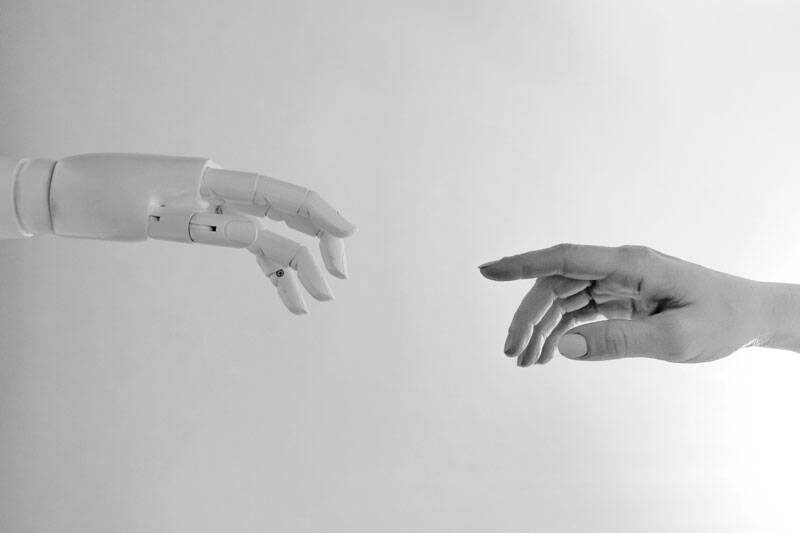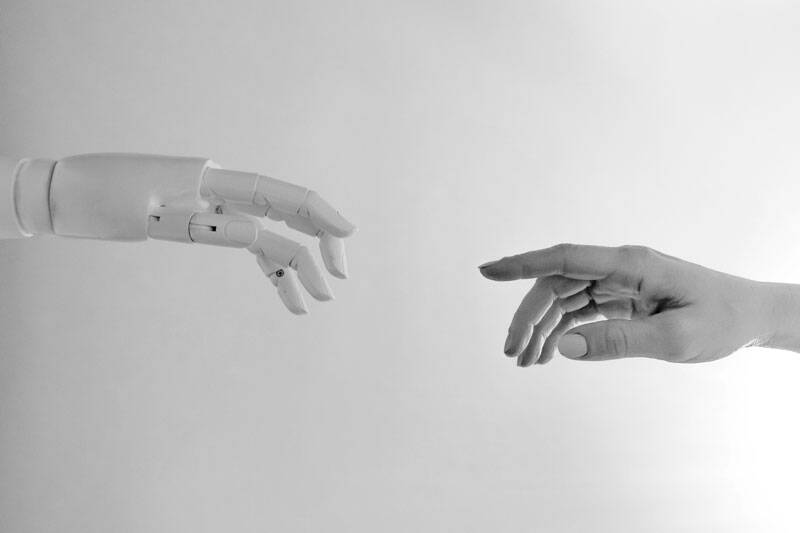










Check out the sources
no. 8
Not anchoring changes in the corporation’s culture
Until new behaviors are rooted in social norms and shared values, they are subject to degradation as soon as the pressure for change is removed.
Declaring victory too soon
Until changes sink deeply into a company’s culture, a process that can take five to ten years, new approaches are fragile and subject to regression.
no. 7
No systematic planning for and creating short-term wins
Without short-term wins, too many people give up or actively join the ranks of those who are resisting change.
no. 6
no. 5
Not removing obstacles from the new vision
Perhaps worst of all are bosses who refuse to change and who make demands that are inconsistent with the overall effort.
no. 4
Under communicating the vision by a factor of ten
Without credible communication, a lot of it, the hearts and minds of the troops are never captured.
Lacking vision
Without a sensible vision, a transformation effort can easily dissolve into a list of confusing and incompatible projects that can take the organization in the wrong direction or nowhere at all.
no. 3
Not creating a powerful enough guiding coalition
Whenever minimum mass is not achieved early in the effort, nothing much worthwhile happens.
no. 2
no. 1
Not establishing a great enough sense of urgency
Sometimes executives underestimate how hard it can be to drive people out of their comfort zone. Sometimes they grossly overestimate how successful they have already been in increasing urgency.
WHY TRANSFORMATIONS FAIL
To create a fertile safe environment where people are most open to innovation and change, Kotter says you should not do the following:

VUCE people
It is a benefit that in professional literature this insight has broken through and is ultimately about the human experience, with all its qualities and shortcomings. Mankind shapes the process of change in a VUCA world, and since every human being is VUCE (Vulnerable, Unique, Complex, Emotional) the culture of an organization is perhaps the most important asset there is. Many are familiar with the famous expression of management consultant Peter Drucker: 'Culture eats strategy for breakfast.' Drucker didn't mean that strategy was unimportant, but rather that he believed that culture is the secret sauce that keeps employees motivated and clients happy.
What we need in these transformative times are leaders who set a good example in being human - dedicated individuals with a strong inner compass, critical but modest, courageous, and social, with a holistic vision of overall systems. If those leaders are also able to provide the floor plan in which teams can follow their own route to the agreed ambitious goal, then you have all the ingredients for the secret sauce.
Overview of the Inner Development Goals framework

Inner Development Goals
The latest moonshot is the initiative around IDG, or Inner Development Goals. The idea around IDG’s was born and first presented publicly at the MindShift Digital Conference at the Stockholm School of Economics in May 2020. The initiators* asked themselves what qualities people need to achieve the UN's 17 Sustainable Development Goals, and an initial survey of over 800 respondents produced a promising definition and framework.
“Inner Development Goals (IDGs) are a blueprint of the capabilities, qualities and skills we need as humans to realize the 17 Sustainable Development Goals (SDGs). We want to educate, inspire and empower people to be a positive force for change in society and to find a more purposeful way of looking at our lives and the lives of people around us.”
*The IDG project initiators is a partnership among the organizations Ekskäret Foundation (ekskaret.se), 29k (29k.org) and the sustainability consultancy The New Division (thenewdivision.world).
The framework looks like this. The IDG initiative is a nonprofit, open source project. It is at its beginning, but the tools it provides can be helpful in the transition from thinking in egosystems to ecosystems.
Hiatt's five-step model for 'change in business, government and our community'
Source: ADKAR, a five-step model for Change in Business, Government and our Community, by Jeff Hiatt (2006)

3
In these new organizations, the soft skills of managers become more important: self-reflection, listening, allowing individuals to be vulnerable; these are important conditions for the creation of a safe culture in which people can excel. Managers must have a willingness and ability to help employees become the best in their profession. On this kind of fertile ground, the problem-solving capacity of the entire organization can grow. The greater that collective capacity becomes, the higher the speed of adaptation to new conditions, and the more competitive the company's proposition becomes in its market.
Far greater is the task of starting to think in ecosystems. In addition to a responsibility to shareholders and stakeholders, companies also have to take responsibility for the communities in which they operate. Perhaps they even have a mission to help the world. More and more companies are asking themselves whether they are part of the problem of global warming, or part of the solution. How do we protect Mother Earth from further destruction? To act effectively on that playing field requires a different kind of change from leaders: an inner change.
Hiatt and Adkar in five steps
The ADKAR Model is a more recent individual change framework created by entrepreneur and author Jeff Hiatt. The book ADKAR A Model for Change in Business, Government and our Community was published in 2006. ADKAR is an acronym that represents the five building blocks of successful change for an individual. They include:
Awareness of the need for change
Desire to participate and support in the change
Knowledge of what to do during and after the change
Ability to realize or implement the change as required
Reinforcement to ensure the results of a change continue
That Hiatt focuses on the human factor is logical. Building on Kotter's insights, his research shows that change often fails because employees do not understand the point and necessity. Also, they often don’t know how to successfully implement change. Leaders regularly lack the capacity to inspire and involve their colleagues. The result is resistance. With the ADKAR model, teams are created to start empowering people to change via information, motivation and tools. The model is still wildly popular within many large companies.
Eight-step process for leading change
Source: eight-step process for leading change, by John P. Kotter (1990)

2
Kotter in eight steps
An influential thought leader on change management is John. P. Kotter, author, professor and consultant. He devised the eight-step process for leading change in 1990. His advice is more practical and evidence based, and includes:
Create a sense of urgency
Build a coalition
Form a strategic vision and initiatives
Recruit a volunteer army
Enable action by removing barriers
Generate short-term gains
Support the acceleration
Enable change
Lewin in three steps
Thoughtful consideration about change begins with Kurt Lewin. Lewin was a German-American psychologist who was the first to develop a three-step model for implementing change in 1936. The model consists of three steps:
Unfreeze
Change
Refreeze
This model of change was a basic view of the process of changing, but paved the way for other models of change to be developed in the future. The first stage - ‘unfreezing’ - involved overcoming inertia and dismantling the existing mindset. The second stage is where the change takes place, usually characterized by a period of confusion and transition. The third and final stage is called ‘refreezing’, where the new mindset crystallizes and one's comfort level returns to previous levels.
1
Lewin's three-step model for implementing change
Source: a three-step model for implementing change, by Kurt Lewin (1936)


Three theories of change
Here, we present some theories of change that reflect the growing complexity of our world. The most important models used to describe change processes distinguish steps and phases. The differences are in the level of detail. Below, we outline three models.
The butterfly effect
But with globalization, we see a growing realization that everything is connected to everything else: societies, companies, technology, nature, and generations. Nothing functions in isolation, and every action in one system can have an effect on another. Think of the butterfly effect: the wings of a butterfly in Brazil can cause a tornado in Texas a few months later. With this holistic view, so grows the understanding that we must situate the theory of change in ecosystems rather than in ego systems. The vision of change is no longer the exclusive right of the CEO, it’s the sum of all the critical and courageous talent present in a company. A new consciousness is needed to successfully execute big tasks.

Change at work
With developments in our daily lives happening at lightspeed, companies must also adapt to prevent their products and services from becoming obsolete. And that means that ultimately companies, business leaders and employees must all change. Employees are crafting their own path, developing into CEOs of their careers. Easy access to information has resulted in unprecedented scrutiny from stock and stakeholders, on social and in mainstream media, and results in permanent pressure on leadership. Just like employees, companies are experiencing FOMO, a permanent stream of ‘fear of missing out signals’ which can be a threat for the organization. With the business environment experiencing so much change, organizations, and their biggest assets - people - must learn to become comfortable with change as well. Therefore, the ability to manage and adapt to organizational change is an essential ability required in today’s workplace.
But change does not occur automatically. That is why research into the processes around change is so valuable. By learning about change, we tend to make fewer mistakes. To be fair, this is a young field, and the diagrams and charts that are shared are open to debate. The most important shortcoming of all existing diagrams is that a schematic representation of the process of change does not do justice to the complex reality of making change happen.
Nevertheless, these studies offer useful insights. And the development of the field itself offers hope - you could say that we see a transition in thinking about change moving from ego to eco. In the beginning, the CEO was the enlightened spirit who proclaimed a message of change to employees; top down he (very often a man) set the cogs in motion, the egocentric boss with an information advantage over the rest. But this stereotype has faded from view.
This new form of convenience, with instant gratification as its promise, results in a butler economy; wherever you are, food and drink are within reach. You might say we are witnessing the birth of the CEC: the Chief Executive Consumer. Within arms reach, mankind has ingredients, a cook, a distributor, a delivery guy and a couch. Truth is, we’re only at the beginning of this digital revolution.
Skepticism around transition
We have witnessed skepticism and confusion around change before in recent history. One example is the arrival of electricity in the late 19th century, which was greeted hesitantly by many. In these early days, hotels with electricity in rooms were often shunned by anxious guests. The fact that electricity could maim put many people off; candlelight was preferred.
The very first automobiles were also met with cynicism and distrust in America. Hardly anyone thought that the horseless carriage – as the automobile was called in the early years between 1890 and 1900 – would win out over horse-drawn carriages. Cars were unreliable, roads were bad and there were no gas stations. Few people thought that this invention, a self-propelling machine, would make mass mobility possible, create a rural road network and upend city planning. Human beings prefer to stick to ideas they already know; after all, change leads to confusion. The challenge with deep, vast and rampant innovation lies not in getting people to accept the new, but to surrender the old.
We are in a transitional phase from a machine age to a digital age. Apart from confusion – especially among older generations – this new era offers many advantages and countless opportunities. Never before in human history has finding new information been so easy. To provide an example from the world of food and hospitality, obtaining food and drink today has never been easier. It took thousands of years for mankind to transition from a hunter gatherer culture to the discovery of agriculture. Not so long ago, citizens in Western societies spent much of their day gathering and cooking food. With the advent of the Internet and the smartphone, obtaining food has become effortless, easy and instantaneous. An order is placed and moments later food is delivered to the doorstep, 24 hours a day. Isn’t it incredible?

From a solid to a fluid society
The renowned sociologist Zygmunt Bauman (1925-2017) uses somewhat different terms to describe this new era. He speaks about the transition from a solid to a fluid modernity. Where solid reality gave us security through institutions we trusted, fixed career paths and long-term love relationships, liquid modernity offers temporary career roles, episodes of love experiences and uncertainty about the future.
This fluidization of the western world is primarily caused by new technology and globalization. More and more knowledge is within reach and information is widely shared. This means that citizens/consumers no longer simply follow what well-renowned institutions and leaders say but rather investigate ideas and principles for themselves. This leads to people choosing their own sources of information, shaping their own lives and formulating their own values and truths.
Our societies are transforming so fast that many do not yet have the tools to deal with this change correctly. Not every citizen has the skill set to filter information critically; polarization and the rise of conspiracy theories are therefore no coincidence. The distribution of information through social media follows a different set of rules than the professional media. Many consumers on social media choose to air their opinions, while a journalist values the importance of hearing both sides of an argument. The confusion and fear that is observed in societies is part of the first phase of adaptation to major technological changes. It is safe to say that we are living in exceptional times, marked not by an era of change but the change of an era.


A VUCA world
We live in a VUCA world - Volatile, Uncertain, Complex and Ambiguous. As the 21st century enters its third decade the world has been rocked by a number of shocks that have challenged liberal democracies throughout the world.
First, the terrorist attacks by al-Qaeda and ISIS had the world in a grip for a number of years. The financial crisis in 2008 and the near-bankruptcy of the financial system was the next big shock. The global COVID-19 pandemic of 2020 was next, with a staggering loss of life and profound economic consequences. Most recently, we experienced the geopolitical shock of Russia declaring war on Ukraine. Not to mention the mental shock caused by growing populism, polarization and the spread of conspiracy theories. And finally, the most important ecological shock that humanity has ever faced: the fight against global warming.
The term VUCA was introduced by the US Military Academy at West Point in 1998. The academy was considering the new military leadership needed in the uncertain world of the upcoming 21st century, the first contours of which were then becoming visible. Author Lieutenant Colonel Wayne E. Whiteman observed a a paradigm shift in the transition from a post cold war era with a fixed status quo to an information age with tremendous rapid change. Instead of managing processes with predictable outcomes, the world would become an unpredictable place. This new reality needed a different type of leader, he argued, adding that “In situations that are characterized by volatile, uncertain, complex and ambiguous (VUCA) conditions, it becomes necessary to structure organizations in such a way that will meet the challenges presented by the environment.” He had a prescient view.
Hans Steenbergen Xiao Er Kong
Change management became a subject of research and study during the 1960s. The reason? The pace at which economic, social and societal changes were taking place occurred more quickly than in previous centuries. Today – some sixty years later – skillful change management is more relevant than ever. What lessons can be learned from research into organizational change? And how has thinking about change evolved?


expert opnion
13 min


















Sources
no. 8
Not anchoring changes in the corporation’s culture
Until new behaviors are rooted in social norms and shared values, they are subject to degradation as soon as the pressure for change is removed.
Declaring victory too soon
Until changes sink deeply into a company’s culture, a process that can take five to ten years, new approaches are fragile and subject to regression.
no. 7
No systematic planning for and creating short-term wins
Without short-term wins, too many people give up or actively join the ranks of those who are resisting change.
no. 6
no. 5
Not removing obstacles from the new vision
Perhaps worst of all are bosses who refuse to change and who make demands that are inconsistent with the overall effort.
no. 4
Under communicating the vision by a factor of ten
Without credible communication, a lot of it, the hearts and minds of the troops are never captured.
Lacking vision
Without a sensible vision, a transformation effort can easily dissolve into a list of confusing and incompatible projects that can take the organization in the wrong direction or nowhere at all.
no. 3
Not creating a powerful enough guiding coalition
Whenever minimum mass is not achieved early in the effort, nothing much worthwhile happens.
no. 2
no. 1
Not establishing a great enough sense of urgency
Sometimes executives underestimate how hard it can be to drive people out of their comfort zone. Sometimes they grossly overestimate how successful they have already been in increasing urgency.
WHY TRANSFORMATIONS FAIL
To create a fertile safe environment where people are most open to innovation and change, Kotter says you should not do the following:

VUCE people
It is a benefit that in professional literature this insight has broken through and is ultimately about the human experience, with all its qualities and shortcomings. Mankind shapes the process of change in a VUCA world, and since every human being is VUCE (Vulnerable, Unique, Complex, Emotional) the culture of an organization is perhaps the most important asset there is. Many are familiar with the famous expression of management consultant Peter Drucker: 'Culture eats strategy for breakfast.' Drucker didn't mean that strategy was unimportant, but rather that he believed that culture is the secret sauce that keeps employees motivated and clients happy.
What we need in these transformative times are leaders who set a good example in being human - dedicated individuals with a strong inner compass, critical but modest, courageous, and social, with a holistic vision of overall systems. If those leaders are also able to provide the floor plan in which teams can follow their own route to the agreed ambitious goal, then you have all the ingredients for the secret sauce.
Overview of the Inner Development Goals framework
Source: eight-step process for leading change, by John P. Kotter (1990)

Inner Development Goals
The latest moonshot is the initiative around IDG, or Inner Development Goals. The idea around IDG’s was born and first presented publicly at the MindShift Digital Conference at the Stockholm School of Economics in May 2020. The initiators* asked themselves what qualities people need to achieve the UN's 17 Sustainable Development Goals, and an initial survey of over 800 respondents produced a promising definition and framework.
“Inner Development Goals (IDGs) are a blueprint of the capabilities, qualities and skills we need as humans to realize the 17 Sustainable Development Goals (SDGs). We want to educate, inspire and empower people to be a positive force for change in society and to find a more purposeful way of looking at our lives and the lives of people around us.”
*The IDG project initiators is a partnership among the organizations Ekskäret Foundation (ekskaret.se), 29k (29k.org) and the sustainability consultancy The New Division (thenewdivision.world).
The framework looks like this. The IDG initiative is a nonprofit, open source project. It is at its beginning, but the tools it provides can be helpful in the transition from thinking in egosystems to ecosystems.
Hiatt's five-step model for 'change in business, government and our community'
Source: ADKAR, a five-step model for Change in Business, Government and our Community, by Jeff Hiatt (2006)


3
In these new organizations, the soft skills of managers become more important: self-reflection, listening, allowing individuals to be vulnerable; these are important conditions for the creation of a safe culture in which people can excel. Managers must have a willingness and ability to help employees become the best in their profession. On this kind of fertile ground, the problem-solving capacity of the entire organization can grow. The greater that collective capacity becomes, the higher the speed of adaptation to new conditions, and the more competitive the company's proposition becomes in its market.
Far greater is the task of starting to think in ecosystems. In addition to a responsibility to shareholders and stakeholders, companies also have to take responsibility for the communities in which they operate. Perhaps they even have a mission to help the world. More and more companies are asking themselves whether they are part of the problem of global warming, or part of the solution. How do we protect Mother Earth from further destruction? To act effectively on that playing field requires a different kind of change from leaders: an inner change.
Hiatt and Adkar in five steps
The ADKAR Model is a more recent individual change framework created by entrepreneur and author Jeff Hiatt. The book ADKAR A Model for Change in Business, Government and our Community was published in 2006. ADKAR is an acronym that represents the five building blocks of successful change for an individual. They include:
Awareness of the need for change
Desire to participate and support in the change
Knowledge of what to do during and after the change
Ability to realize or implement the change as required
Reinforcement to ensure the results of a change continue
That Hiatt focuses on the human factor is logical. Building on Kotter's insights, his research shows that change often fails because employees do not understand the point and necessity. Also, they often don’t know how to successfully implement change. Leaders regularly lack the capacity to inspire and involve their colleagues. The result is resistance. With the ADKAR model, teams are created to start empowering people to change via information, motivation and tools. The model is still wildly popular within many large companies.
Eight-step process for leading change
Source: eight-step process for leading change, by John P. Kotter (1990)

2
Kotter in eight steps
An influential thought leader on change management is John. P. Kotter, author, professor and consultant. He devised the eight-step process for leading change in 1990. His advice is more practical and evidence based, and includes:
Create a sense of urgency
Build a coalition
Form a strategic vision and initiatives
Recruit a volunteer army
Enable action by removing barriers
Generate short-term gains
Support the acceleration
Enable change
Lewin in three steps
Thoughtful consideration about change begins with Kurt Lewin. Lewin was a German-American psychologist who was the first to develop a three-step model for implementing change in 1936. The model consists of three steps:
Unfreeze
Change
Refreeze
This model of change was a basic view of the process of changing, but paved the way for other models of change to be developed in the future. The first stage - ‘unfreezing’ - involved overcoming inertia and dismantling the existing mindset. The second stage is where the change takes place, usually characterized by a period of confusion and transition. The third and final stage is called ‘refreezing’, where the new mindset crystallizes and one's comfort level returns to previous levels.
1
Lewin's three-step model for implementing change
Source: a three-step model for implementing change, by Kurt Lewin (1936)


Three theories of change
Here, we present some theories of change that reflect the growing complexity of our world. The most important models used to describe change processes distinguish steps and phases. The differences are in the level of detail. Below, we outline three models.
The butterfly effect
But with globalization, we see a growing realization that everything is connected to everything else: societies, companies, technology, nature, and generations. Nothing functions in isolation, and every action in one system can have an effect on another. Think of the butterfly effect: the wings of a butterfly in Brazil can cause a tornado in Texas a few months later. With this holistic view, so grows the understanding that we must situate the theory of change in ecosystems rather than in ego systems. The vision of change is no longer the exclusive right of the CEO, it’s the sum of all the critical and courageous talent present in a company. A new consciousness is needed to successfully execute big tasks.

Change at work
With developments in our daily lives happening at lightspeed, companies must also adapt to prevent their products and services from becoming obsolete. And that means that ultimately companies, business leaders and employees must all change. Employees are crafting their own path, developing into CEOs of their careers. Easy access to information has resulted in unprecedented scrutiny from stock and stakeholders, on social and in mainstream media, and results in permanent pressure on leadership. Just like employees, companies are experiencing FOMO, a permanent stream of ‘fear of missing out signals’ which can be a threat for the organization. With the business environment experiencing so much change, organizations, and their biggest assets - people - must learn to become comfortable with change as well. Therefore, the ability to manage and adapt to organizational change is an essential ability required in today’s workplace.
But change does not occur automatically. That is why research into the processes around change is so valuable. By learning about change, we tend to make fewer mistakes. To be fair, this is a young field, and the diagrams and charts that are shared are open to debate. The most important shortcoming of all existing diagrams is that a schematic representation of the process of change does not do justice to the complex reality of making change happen.
Nevertheless, these studies offer useful insights. And the development of the field itself offers hope - you could say that we see a transition in thinking about change moving from ego to eco. In the beginning, the CEO was the enlightened spirit who proclaimed a message of change to employees; top down he (very often a man) set the cogs in motion, the egocentric boss with an information advantage over the rest. But this stereotype has faded from view.

This new form of convenience, with instant gratification as its promise, results in a butler economy; wherever you are, food and drink are within reach. You might say we are witnessing the birth of the CEC: the Chief Executive Consumer. Within arms reach, mankind has ingredients, a cook, a distributor, a delivery guy and a couch. Truth is, we’re only at the beginning of this digital revolution.
Skepticism around transition
We have witnessed skepticism and confusion around change before in recent history. One example is the arrival of electricity in the late 19th century, which was greeted hesitantly by many. In these early days, hotels with electricity in rooms were often shunned by anxious guests. The fact that electricity could maim put many people off; candlelight was preferred.
The very first automobiles were also met with cynicism and distrust in America. Hardly anyone thought that the horseless carriage – as the automobile was called in the early years between 1890 and 1900 – would win out over horse-drawn carriages. Cars were unreliable, roads were bad and there were no gas stations. Few people thought that this invention, a self-propelling machine, would make mass mobility possible, create a rural road network and upend city planning. Human beings prefer to stick to ideas they already know; after all, change leads to confusion. The challenge with deep, vast and rampant innovation lies not in getting people to accept the new, but to surrender the old.
We are in a transitional phase from a machine age to a digital age. Apart from confusion – especially among older generations – this new era offers many advantages and countless opportunities. Never before in human history has finding new information been so easy. To provide an example from the world of food and hospitality, obtaining food and drink today has never been easier. It took thousands of years for mankind to transition from a hunter gatherer culture to the discovery of agriculture. Not so long ago, citizens in Western societies spent much of their day gathering and cooking food. With the advent of the Internet and the smartphone, obtaining food has become effortless, easy and instantaneous. An order is placed and moments later food is delivered to the doorstep, 24 hours a day. Isn’t it incredible?

From a solid to a fluid society
The renowned sociologist Zygmunt Bauman (1925-2017) uses somewhat different terms to describe this new era. He speaks about the transition from a solid to a fluid modernity. Where solid reality gave us security through institutions we trusted, fixed career paths and long-term love relationships, liquid modernity offers temporary career roles, episodes of love experiences and uncertainty about the future.
This fluidization of the western world is primarily caused by new technology and globalization. More and more knowledge is within reach and information is widely shared. This means that citizens/consumers no longer simply follow what well-renowned institutions and leaders say but rather investigate ideas and principles for themselves. This leads to people choosing their own sources of information, shaping their own lives and formulating their own values and truths.
Our societies are transforming so fast that many do not yet have the tools to deal with this change correctly. Not every citizen has the skill set to filter information critically; polarization and the rise of conspiracy theories are therefore no coincidence. The distribution of information through social media follows a different set of rules than the professional media. Many consumers on social media choose to air their opinions, while a journalist values the importance of hearing both sides of an argument. The confusion and fear that is observed in societies is part of the first phase of adaptation to major technological changes. It is safe to say that we are living in exceptional times, marked not by an era of change but the change of an era.

A VUCA world
We live in a VUCA world - Volatile, Uncertain, Complex and Ambiguous. As the 21st century enters its third decade the world has been rocked by a number of shocks that have challenged liberal democracies throughout the world.
First, the terrorist attacks by al-Qaeda and ISIS had the world in a grip for a number of years. The financial crisis in 2008 and the near-bankruptcy of the financial system was the next big shock. The global COVID-19 pandemic of 2020 was next, with a staggering loss of life and profound economic consequences. Most recently, we experienced the geopolitical shock of Russia declaring war on Ukraine. Not to mention the mental shock caused by growing populism, polarization and the spread of conspiracy theories. And finally, the most important ecological shock that humanity has ever faced: the fight against global warming.
The term VUCA was introduced by the US Military Academy at West Point in 1998. The academy was considering the new military leadership needed in the uncertain world of the upcoming 21st century, the first contours of which were then becoming visible. Author Lieutenant Colonel Wayne E. Whiteman observed a a paradigm shift in the transition from a post cold war era with a fixed status quo to an information age with tremendous rapid change. Instead of managing processes with predictable outcomes, the world would become an unpredictable place. This new reality needed a different type of leader, he argued, adding that “In situations that are characterized by volatile, uncertain, complex and ambiguous (VUCA) conditions, it becomes necessary to structure organizations in such a way that will meet the challenges presented by the environment.” He had a prescient view.
Hans Steenbergen Xiao Er Kong
Change management became a subject of research and study during the 1960s. The reason? The pace at which economic, social and societal changes were taking place occurred more quickly than in previous centuries. Today – some sixty years later – skillful change management is more relevant than ever. What lessons can be learned from research into organizational change? And how has thinking about change evolved?
How to manage transformation


13 min
















